Châteauneuf-de-Randon in Lozère |
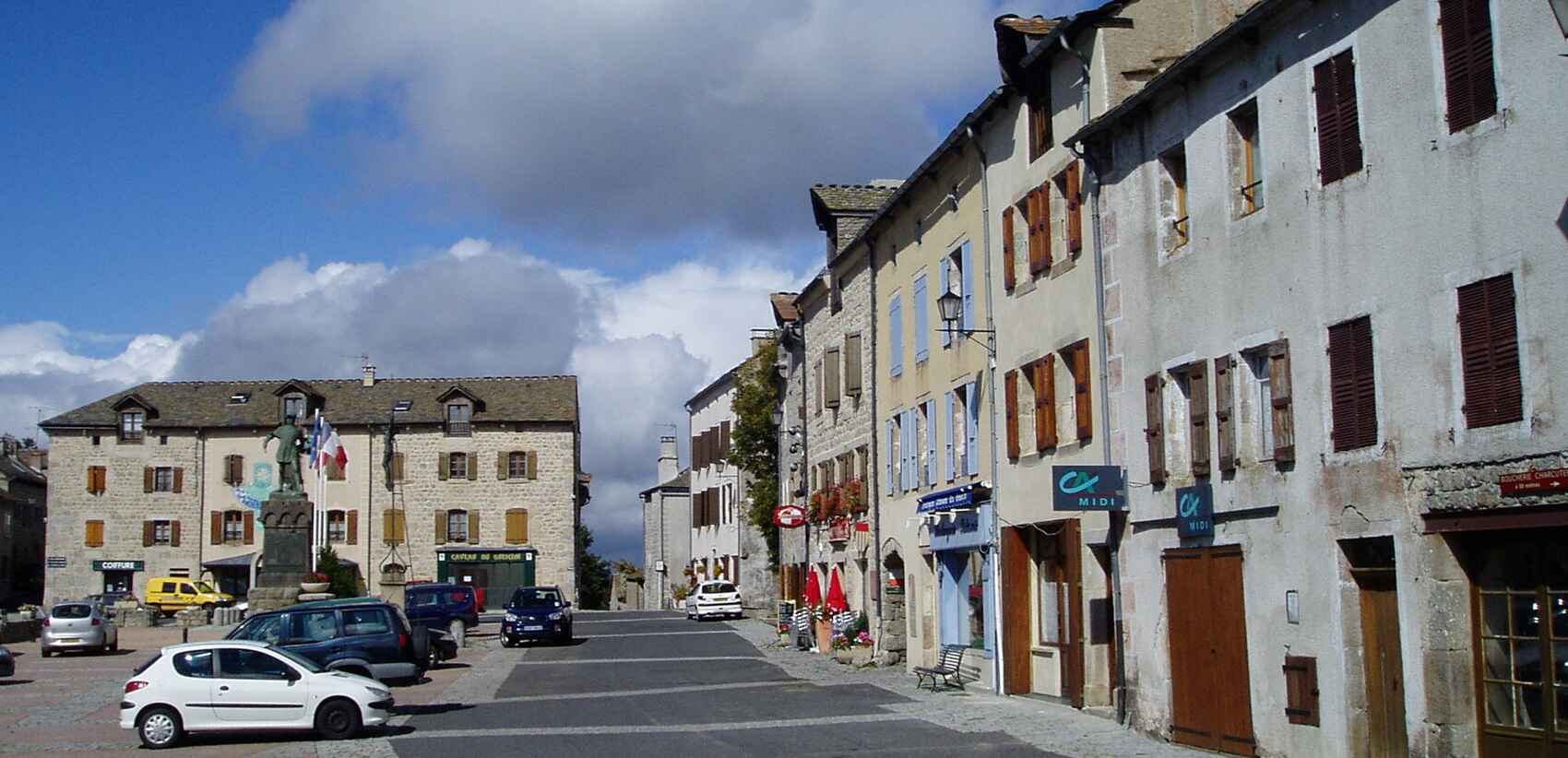
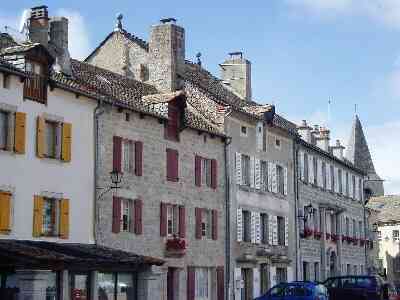 The village is first mentioned in 1227, under the name "Castrum Novum". It was then an important stronghold controlled by the Randon family. In the 14th century, the village was besieged by Bertrand du Guesclin, who succeeded in reclaiming it from the English.
The village is first mentioned in 1227, under the name "Castrum Novum". It was then an important stronghold controlled by the Randon family. In the 14th century, the village was besieged by Bertrand du Guesclin, who succeeded in reclaiming it from the English.
In the 16th century, Châteauneuf-de-Randon became an important town with a population of over 1,000 inhabitants. It was then a prosperous commercial and artisanal center.
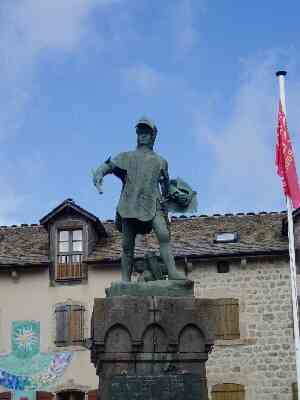 In the 18th century, the town experienced a decline due to competition from other towns in the region. The population decreased and the economy retracted. It is located on the Margeride plateau and has around 800 inhabitants. Châteauneuf-de-Randon is known for its historical heritage, particularly its 14th-century medieval castle, which is classified as a historical monument, as well as its 12th-century Romanesque church. The municipality is also located near tourist sites such as Lake Charpal and the Margeride mountains. Châteauneuf-de-Randon is a choice destination for those seeking tranquility and the beauty of the natural landscapes of Margeride, as well as for history and heritage enthusiasts.
In the 18th century, the town experienced a decline due to competition from other towns in the region. The population decreased and the economy retracted. It is located on the Margeride plateau and has around 800 inhabitants. Châteauneuf-de-Randon is known for its historical heritage, particularly its 14th-century medieval castle, which is classified as a historical monument, as well as its 12th-century Romanesque church. The municipality is also located near tourist sites such as Lake Charpal and the Margeride mountains. Châteauneuf-de-Randon is a choice destination for those seeking tranquility and the beauty of the natural landscapes of Margeride, as well as for history and heritage enthusiasts.
Châteauneuf-de-Randon is surrounded by mountains, including Mont Lozère, the highest peak in the Massif Central. The village is situated in a natural zone of ecological, faunal, and floral interest (ZNIEFF), which hosts a great diversity of plants and animals. The forests in the region are dominated by Scots pines, beeches, and oaks. There are also meadows, wetlands, and cliffs. The fauna is also rich and diverse. One can see deer, wild boars, foxes, roe deer, chamois, marmots, birds of prey, etc.
The population of Châteauneuf-de-Randon has been steadily decreasing since the 19th century. In 1856, the municipality had 1,502 inhabitants, compared to 523 in 2021.
On a rocky promontory overlooking the junction of N. 88 and D. 998, located 29 km north of Mende. The capital of the canton, an ancient stronghold of the barony of Randon. Occupied in the 14th century by the English, after the Treaty of Brétigny in 1360.
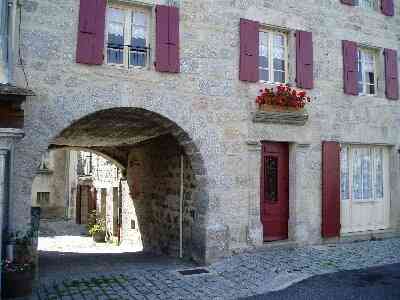 Constable Bertrand Du Guesclin laid siege to it in late June 1380. But he died on July 13 without being able to retake the place, and it was on his coffin that the leader of the besieged, Pierre de Galard, handed over the keys of the city to the constable of Sancerre. Tradition has it that Du Guesclin died after drinking the water too cold from the Glauze spring, located west of the city.
Constable Bertrand Du Guesclin laid siege to it in late June 1380. But he died on July 13 without being able to retake the place, and it was on his coffin that the leader of the besieged, Pierre de Galard, handed over the keys of the city to the constable of Sancerre. Tradition has it that Du Guesclin died after drinking the water too cold from the Glauze spring, located west of the city.
In the beautiful square, where important cattle fairs used to take place, a bronze statue by Hector Lemaine has been erected in memory of the great constable. It was inaugurated in 1894. To the northwest, the ruins of an 11th-century tower of the old castle called "Tour des Anglais" still remain. A bit further north, on the path leading down to the Chapeauroux and the Rodier bridge, one can notice a granite rock in balance. On its pedestal, it reads "the Wobbling Stone". At the crossroads of the roads, L'Habitarelle, where a granite mausoleum is intended to commemorate the passing of Du Guesclin. The constable is depicted standing, lying down, a replica of the effigy of Saint Denis where the constable was buried after a tumultuous journey.
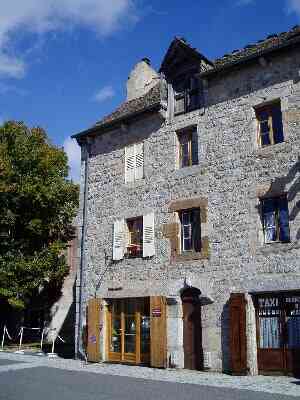 Bertrand Duguesclin. Tower of the English.
Bertrand Duguesclin. Tower of the English.
A medieval city built by the Lords of Randon on the site of a Gallo-Roman village. It is an old fortress of which only the Watchtower called "Tower of the English" remains. 1
In July 1380, Bertrand Du Guesclin, Grand Constable of the Armies of the Kingdom of France, died there after drinking from the "Glauze" fountain. On the reserved square of the village stands his imposing bronze statue, located at "L'Habitarelle", a granite cenotaph was erected for posterity in honor of the great warrior.
Born in La Motte-Broons, south of Dinan, a fighter and of legendary ugliness, he became constable of France and Castile in 1370 and was one of the great figures of the Middle Ages. He actively participated in the War of the Succession of Brittany, supporting Charles of Blois, then serving the King of France and fighting against the Great Companies (bands of looters) and the English invader.
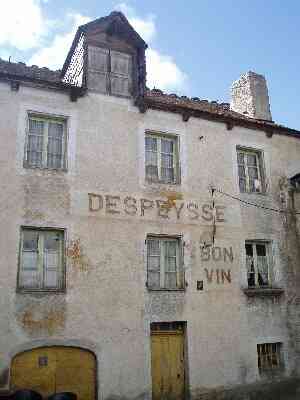 He died during the siege of Châteauneuf-de-Randon. He had 4 burials: one at the Basilica of Saint-Denis, near the King of France, one in Puy-en-Velay, one in Clermont-Ferrand, and the last in Dinan, the only one remaining intact. The cenotaph where his heart rests is located in the Church of Saint-Sauveur in Dinan. The municipality of Montbel was created in 1867 by detachment from Châteauneuf-de-Randon and La Fage-Saint-Julien.
He died during the siege of Châteauneuf-de-Randon. He had 4 burials: one at the Basilica of Saint-Denis, near the King of France, one in Puy-en-Velay, one in Clermont-Ferrand, and the last in Dinan, the only one remaining intact. The cenotaph where his heart rests is located in the Church of Saint-Sauveur in Dinan. The municipality of Montbel was created in 1867 by detachment from Châteauneuf-de-Randon and La Fage-Saint-Julien.
At that time, in 1380, Auvergne and the province of Margeride being infested with brigands and Englishmen, these states requested the sending of a royal army and insisted that it be Du Guesclin who commanded it.
They were satisfied, the Constable organized his battle plan, which consisted of isolating the rock of Carlat, in the Carladès region in the current Cantal department, where a fortress forbade any invader from Guyenne or Spain from entering high Auvergne.
Today, nothing remains of this work, which was dismantled by order of Henry IV. He executed his project and then went to Châteauneuf de Randon, occupied at the time by the English, to try to reclaim the village. He drank from a cold water source at the fountain of the meadow of Glauze, near the hamlet of Albuges, and would succumb to a cerebral congestion after his men had reclaimed the city. The siege and blockade lasted fifteen days.
Anecdote or story? ... Whatever it may be, this illustrious character had a reputation for being "moody" and often expressed his bad temper. His mother, when he was young, forced him to drink water from a silver cup during each of his crises.
Before his death, Du Guesclin requested to be buried in Brittany near Dinan. One must realize the challenges of the journey in the summer of 1380. His entrails were left at Puy-en-Velay, in the present-day church of St. Laurent. However, due to the slowness of the funeral procession and the oppressive summer heat, the embalming quickly proved insufficient.
 The flesh of the Constable had to be boiled and buried in Montferrand in a small church called the Cordeliers, destroyed in 1793 by revolutionaries. The adventures were not yet over; upon arriving in Le Mans, the convoy was intercepted by a royal envoy who demanded the remains to be transferred to St. Denis.
The flesh of the Constable had to be boiled and buried in Montferrand in a small church called the Cordeliers, destroyed in 1793 by revolutionaries. The adventures were not yet over; upon arriving in Le Mans, the convoy was intercepted by a royal envoy who demanded the remains to be transferred to St. Denis.
The skeleton was then handed over to him, with only the heart arriving in Dinan. Thus ends the story of Du Guesclin; he has three tombs, two effigies, one of which depicts him with a beard in Puy-en-Velay (a snapshot from the time that looks like a modern photograph) and the other without a beard at the Basilica of Saint Denis near Paris.
Carts laden with meager furnishings, the armed men who guarded them, burning and ruined towns. This is the vision of a contemporary of the last years of the Hundred Years' War, depicting the suffering of French campaigns ravaged by English raids, the pillage of the routiers of the Great Companies abandoned and unpaid during the truces, and the devastation by the "Ecorcheurs" who wreaked havoc from 1435 to 1444.
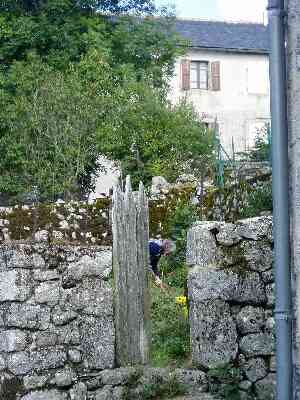 From 1328, the death of Charles IV, until 1461, the death of Charles VII, at which point the English hold only Calais in France, a war lasting over a century. The Hundred Years' War will shake France to its core.
From 1328, the death of Charles IV, until 1461, the death of Charles VII, at which point the English hold only Calais in France, a war lasting over a century. The Hundred Years' War will shake France to its core.
From 1337 to 1343: The English multiplied attacks against provinces loyal to Philip VI.
1346: The army of the King of France is defeated at Crécy.
1347: The city of Calais must surrender to the English.
1345: The Black Death ravages France and then England.
1356: John II the Good, successor of Philip VI, loses the battle of Poitiers and is taken prisoner.
1356 - 1358: The dolphin (future Charles V) faces the merchants' revolt, organized by Étienne Marcel.
1360: Peace is signed at Brétigny; the King of France must abandon many territories to the King of England.
***
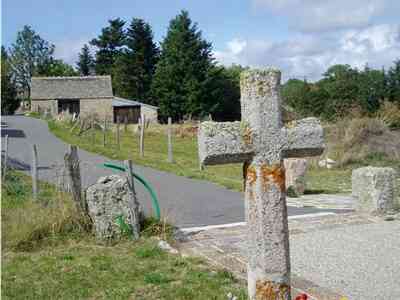 The first four fairs of Châteauneuf were created in 1542 by Francis I, King of France: these are the ones on the Monday before Palm Sunday, on July 26, August 21, and October 9. Châteauneuf-de-Randon was a "capital" for local farmers. Many "dealers" came from Auvergne, Rouergue, Vivarais, and especially from Lower Languedoc. At the beginning of the 20th century, there were 16 fairs in the year: - on January 13, buying the pig for the year's preserves; on the first Monday of February and February 19; on the first Monday of March and March 19, Saint Joseph's Day; on the first Monday of April and April 19; on the second Wednesday of May and the Wednesday before Saint John; on July 26, August 20, September 22, October 9, the Wednesday before Saint Andrew in November, and the Wednesday before Christmas in December.
The first four fairs of Châteauneuf were created in 1542 by Francis I, King of France: these are the ones on the Monday before Palm Sunday, on July 26, August 21, and October 9. Châteauneuf-de-Randon was a "capital" for local farmers. Many "dealers" came from Auvergne, Rouergue, Vivarais, and especially from Lower Languedoc. At the beginning of the 20th century, there were 16 fairs in the year: - on January 13, buying the pig for the year's preserves; on the first Monday of February and February 19; on the first Monday of March and March 19, Saint Joseph's Day; on the first Monday of April and April 19; on the second Wednesday of May and the Wednesday before Saint John; on July 26, August 20, September 22, October 9, the Wednesday before Saint Andrew in November, and the Wednesday before Christmas in December.
At the beginning of the century, farmers would arrive the day before to settle in. Inns, cafes, and hosts were bustling with people. All these merchants would eat, drink, and sample traditional dishes such as flègue and tripoux. They discussed the prices they would propose the next day. The village square was entirely filled with horned beasts, lined up against each other, leaving little space for the inhabitants to pass. The discussions were loud, in dialect, the tone rose, people got angry, left, then returned before realizing the transaction was finalized with a slap on the farmer's right hand.
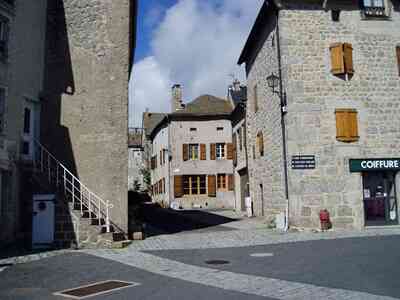 With a snip of scissors, they would form a letter or a number by cutting a few hairs on the animal's hindquarters, and the sale would end with a few "canouns" at the local café. Gradually, farmers began to move with their animals in trailers pulled by cars, thus shortening the fairs. The number of farmers with livestock had significantly decreased due to the depopulation of Lozère, and the fairs completely disappeared from the landscape of Châteauneuf.
With a snip of scissors, they would form a letter or a number by cutting a few hairs on the animal's hindquarters, and the sale would end with a few "canouns" at the local café. Gradually, farmers began to move with their animals in trailers pulled by cars, thus shortening the fairs. The number of farmers with livestock had significantly decreased due to the depopulation of Lozère, and the fairs completely disappeared from the landscape of Châteauneuf.
The Town Hall of Châteauneuf proposed to build a fountain in the square, as the inhabitants were using a dirty well for drinking. Assisted by the Municipal Council, the mayor wrote to the members of the Public Assistance commission to make the request on November 10, 1894. The municipality decided to borrow from the National Pension Fund for the Elderly the sum of 67,000 francs needed for construction, with the obligation to amortize this expense through a tax of 67 cents over 50 years. According to stories told by the elders, discussions heated up, and once the elections were over, the municipal council found itself divided into two factions: 6 for the right and 6 for the left.
Therefore, it was necessary to break the tie among the councilors. Knowing the mayor's vote is decisive, he chose to side with the supporters of the fountain, meaning the left. Meanwhile, the right circulated a petition against this project. On September 29, 1929, during a municipal council session, Mr. Galière, mayor of Châteauneuf, presented the plan and estimate for the fountain, and the project was finally adopted.
The stones for it were carved by Mr. Bourret from La Fage. Many appreciated the convenience of filling their watering can in the square rather than drawing water from their meadows.
Former holiday hotel with a garden along the Allier, L'Etoile Guest House is located in La Bastide-Puylaurent between Lozere, Ardeche, and the Cevennes in the mountains of Southern France. At the crossroads of GR®7, GR®70 Stevenson Path, GR®72, GR®700 Regordane Way, GR®470 Allier River springs and gorges, GRP® Cevenol, Ardechoise Mountains, Margeride. Numerous loop trails for hiking and one-day biking excursions. Ideal for a relaxing and hiking getaway.
Copyright©etoile.fr